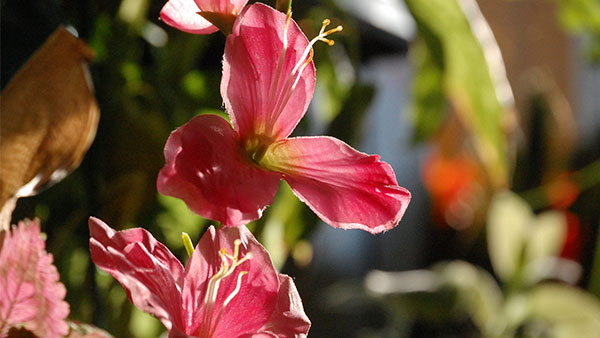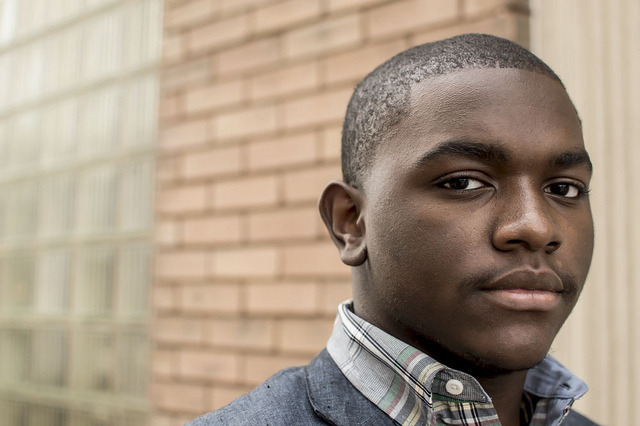Photography Camera Aperture Explained

Aperture is part of what photographers refer to as the Exposure Triangle, along with ISO and Shutter Speed. Aperture is a popular topic of discussion among both amateurs and professionals in photography because it either adds dimension to an image by separating a subject and background via shallow depth of field, or it can bring everything into tack sharp focus.
Aperture Priority on a DSLR
Many beginning photographers who still haven’t quite moved away from Auto mode to Manual, usually use Aperture priority as a half-way step. When I first started using DSLR cameras, I used this method to gain more control over the look of my images, and I learned a lot more about digital photography by doing so.
What is Camera Aperture?
Aperture is the hole within a camera lens through which light travels to reach the camera sensor. It’s very similar to how the human eye works. The amount of light that reaches the retina in our eyes is limited by the size of pupil, which is why your pupils become wider in low light situations to compensate. It is the same with camera aperture in lenses, and why wide aperture lenses are used for low light situations in photography.
What Do Aperture F-Stop Numbers Mean?
In photography, aperture numbers are called F-Stops. This is a way of describing the aperture (how opened or closed it is), and how much light it allows in. A smaller f-stop means a larger aperture, while a larger f-stop means a smaller aperture. To most people this seems backwards since F/2 is larger than f/8. I prefer to think of F numbers as slices of a circle or pizza, F 2 or 1/2 of circle is more than F 8 or 1/8 of a circle.
Image from Wikipedia.com
I Explain Aperture More in This Video
Lenses and Aperture
There are two types of lenses, fixed aperture (often called prime lenses) and variable aperture lenses found among lenses with zoom capabilities. Most kit lenses that come with a camera are variable aperture lenses. What this means is that when you zoom out on a kit lens to 18mm, the aperture will be f/3.5 but when you zoom fully in to 50mm it will be f/5.6. There are zoom lenses among the professional tier of lenses that have fixed apertures, such as the 70-200mm f/2.8 lenses among Nikon, Canon, and Sony. These lenses tend to be considerably heavier and more expensive.
Aperture and Depth of Field
Aperture controls Depth of Field in your images. Depth of field refers to where your image is sharp. A popular look is shallow depth of field which can be achieved with a Wide Aperture like F/1.8, but it also controls how much light is being let in through the lens. A smaller or more narrow Aperture like F/16 will give you an image where the background is very detailed and in focus. This could be good for architecture and landscapes, or when shooting large groups.
When shooting portraits for photography or video where you want to separate the subject from the background, shallow depth of field and shooting with a wide aperture is ideal.
To compensate in photography you can use a lower ISO, (e.g. ISO 100 or 200) and a higher shutter speed.
If you are shooting DSLR Video in Daylight with a wide aperture, a faster shutter speed will not be an option so you will need to make use of an ND (neutral density) Filter or a Variable ND Filter.
Understanding How Lens Aperture is Marketed
Lenses are typically marketed by their maximum (lower f number) aperture, for example F/1.4 and F/1.8. The reasoning for this is the maximum aperture allows you to shoot at a faster overall shutter speed. Often prime lenses are referred to as fast lenses for this reason.
The maximum aperture number tends to be more important than the minimum aperture number for most photographers. The maximum number tells you that more light can pass through the lens, which means the lens will perform better in low light. The minimum aperture number tends to be between f/16- f/22, which are rarely used outside of landscape photography.
This article was last modified on July 10, 2015
This article was first published on July 10, 2015







Hey,
I had a quick question about buying a new camera and figured you may be able to help me. Im a recent college grad looking to do some part time photography and build my portfolio. I have been looking for a good camera with my graduation money, well part of it anyway. I was looking around the 1,000 to 1,500$ range. Anyway, I have read lots of reviews ect about different cameras and have taken a liking to the Canon EOS 5D Mark III It’s a lot more then my price range new but used i could possibly buy one. Or this Sony a7R II which i saw on this site https://www.bestcamerahq.com Do any of you have any experience with either of these or could recommend something that meet the above criteria?
Thanks for the help!
[…] is part of the Exposure Triangle along with Aperture and Shutter Speed. ISO effects your camera’s sensitivity to light, but also the amount of […]
Wider maximum aperture also means that at smaller apertures you’re using a part of the lens that’s closer to the overall center and thus less subject to distortion, doesn’t it? (Question, not assertion.)
I used to do photography semi professionally but it’s been years, no decades! What a great article! Great refresher!
Here’s more about the pizza explanation.. and way to speak about the pizza that may help in understanding the value of each F-Stop.
F-Stops are fractions…
How much of that pizza do you want? Do you want 1/16 of the pizza or 1/4 of the pizza or 1/2 of the pizza. This is an easy way to know that F2 is a lot more pizza than F16. The amount of pizza you get is equal to the F-stop with a 1 over it. The amount of pizza is the same as the amount of light let into the camera through the F-Stop when the shutter fires.
I love the pizza analogy! I have to tell you that I never really understood f-stops and aperture (and I’ve written books about Photoshop!), but this article is helping me get it. So, if I want that fuzzy-background look, I should lower the f-stop (increase the aperture) as much as possible, right? My point and shoot seems to bottom out at f3.5, which is probably too high to get that cool effect. Hm.